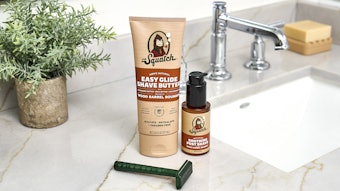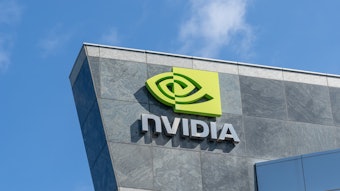
Simply managing your impacts or reducing your footprint by being “less bad” will not be enough; brands must do more good in the world, becoming net-positive and regenerative for people and planet.
“Our house is on fire,” then-16-year-old Greta Thunberg told the congregants at the 2019 World Economic Forum in Davos, Switzerlanda. She added, “[We] are less than 12 years away from not being able to undo our mistakes. In that time, unprecedented changes in all aspects of society need to have taken place, including a reduction of our CO2 emissions by at least 50%.”
As if existential threats weren’t enough, Mark Carney, governor of the Bank of England, has noted, “Companies that don’t adapt will go bankrupt without questionb.”
The stakes will be high for business and brands, not least in the beauty and personal care category. Simply managing your impacts or reducing your footprint by being “less bad” will not be enough; brands must do more good in the world, becoming net-positive and regenerative for people and planet. This new sustainability agenda is clearly a game-changer, requiring new approaches to innovation.
The good news is we have a growing business case for this sustainable brand leadership; one study put hitting the 2030 Sustainable Development Goals as a $12-trillion opportunity for the private sectorc. To illustrate, Unileverd reports its Sustainable Living brands are growing 69% faster than conventional brands, delivering 75% of business growth.
Staggeringly, more than 120 billion beauty and personal care packaging units are created each year, with the majority of their packs destined to end up as wastee. Yet sustainability is regularly reported as a top industry trend, with sustainable products reportedly selling many times faster than conventional alternatives.
4 Strategies to Ramp Up Sustainability
While things may be slowly changing, the trick now is to build this momentum into a green game-changing agenda. Here, I present four beauty and personal care strategies—two in sourcing and ingredients, two in packaging and waste—that match up to the scale and pace of the challenge: to save the world while helping people look and feel great.
1. Regenerative sourcing
Sourcing of ingredients in supply chains is the biggest impact area for beauty and personal care products—95% of the total greenhouse gas (GHG) footprint, according to lifecycle assessment specialists Quantisf. What goes into products and how they are made, grown or sourced is clearly crucial.
On top of this, a 2019 United Nations reportg warned that, “Nature is declining globally at rates unprecedented in human history—and the rate of species extinctions is accelerating, with grave impacts on people around the world now likely.” This is a clear threat to the ecosystems and agriculture upon which much of the industry relies.
There is an urgent need for supply chains and ingredients sourcing to support natural system regeneration, biodiversity enhancement and the prevention of deforestation through practices like rewilding, biodynamic and organic farming, permaculture, and rainforest protection and enhancement. The future of the category may indeed depend on it.
One example of this strategy in action is Seed Phytonutrients, which sources from a diverse range of organic, heirloom and open-pollinated seeds from small family run organic farms that plant and harvest exclusively for the brand with a goal to “preserve seed diversity.” The brand pays for harvests in full and up front whether crops succeed or fail, allowing farmers to invest in their farms and plan for the long-term.
Lush Cosmetics, meanwhile, recently announced a regenerative cork pack for its Naked pack-free soaps. The reusable pot is harvested from living cork trees that captures more carbon than its production and transportation creates (see “What Would it Take to Go Carbon-positive?” on Page 21).
2. Zero waste
Sub-Zero Waste was Mintel’s top industry trend for 2019h, which the firm concludes “is not a trend, it’s a movement towards a ground shaking new archetype for the industry.” Waste-free influencers and zero-waste bloggers have exploded globally while countries like the United Kingdom experienced the “Blue Planet” effect and the “War on Waste” phenomenon, both of which showed the power of ecological television. It’s not hard to see the public waking up to waste. Data has showni that 62% of U.S. and U.K. consumers believe in reducing plastics and improving the environment, while 89% in China report finding disposable plastics off-puttingj.
For the full article, check out Global Cosmetic Industry's February digital magazine.
Footnotes:
awww.theguardian.com/environment/2019/jan/25/our-house-is-on-fire-greta-thunberg16-urges-leaders-to-act-on-climate
bwww.theguardian.com/environment/2019/oct/13/firms-ignoring-climate-crisis-bankrupt-mark-carney-bank-england-governor
cwww.undp.org/content/undp/en/home/blog/2017/8/25/More-than-philanthropy-SDGs-present-an-estimated-US-12-trillion-in-market-opportunities-for-private-sector-through-inclusive-business.html
dwww.unilever.com/news/press-releases/2019/unilevers-purpose-led-brands-outperform.html
ewww.zerowasteweek.co.uk/graham-fish-men-u-mens-grooming/
fhttps://quantis-intl.com/wp-content/uploads/2017/02/cosmetics_report_2017_01_30.pdf
gwww.un.org/sustainabledevelopment/blog/2019/05/nature-decline-
hwww.mintel.com/press-centre/beauty-and-personal-care/mintel-announces-sub-zero-waste-as-2019s-global-beauty-and-personal-care-trend
iwww.standard.co.uk/business/blue-planet-effect-gives-boost-to-sustainable-investment-a4006751.html
jwww.accenture.com/t20181205t121039z__w__/us-en/_acnmedia/thought-leadership-assets/pdf/accenture-competitiveagility-gcpr-pov.pdf; www.jwtintelligence.com/trend-reports/the-new-sustainability-regeneration











